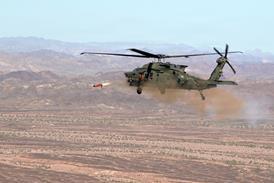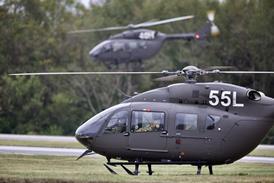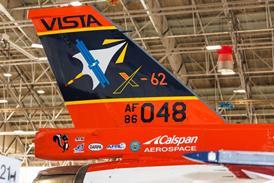On Christmas Eve 1925, Pratt & Whitney completed construction of the revolutionary air-cooled radial R-1340 Wasp engine. With its groundbreaking horsepower, lightweight design and unprecedented reliability, the Wasp engine was a catalyst for a new era in military aviation, powering the first wave of carrier-based aircraft for the US Navy.
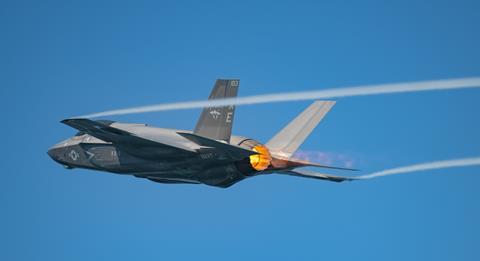
Now, a century later, Jill Albertelli, president of Pratt & Whitney Military Engines, continues to drive that spirit of innovation alongside thousands of global military engine employees as they help to power the full spectrum of tactical, strategic and mobility aircraft for the USA and its allies.
Pratt & Whitney’s engines have powered military aircraft through some of history’s most defining conflicts, and today, with more than 7,500 military engines in service with dozens of armed forces around the world, their performance and dependability continue to enable dominance in the skies.
Pratt & Whitney’s military engines portfolio includes the F135 for the Lockheed Martin F-35 Lightning II and the F119 for the F-22 Raptor, the F100 that powers the Boeing F-15 and Lockheed F-16, and the F117 for the Boeing C-17 Globemaster III. It also includes the TF33, which powers the current generation Boeing B-52 Stratofortress bomber, and the F139 – the military designation for the PW4000 commercial aviation engine family – on the Boeing KC-46A Pegasus tanker.
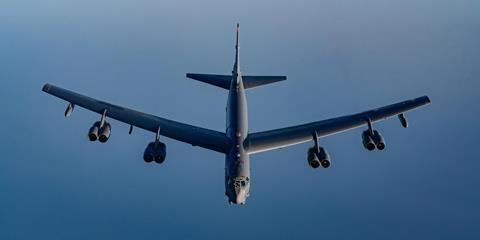
“Our engines range in size from 150lbs to 50,000lbs of thrust, which power munitions, bombers, tankers, fighters and transport aircraft,” says Albertelli. “The fleet of today benefits from the courageous accountability of the employees who came before, and the relentless dedication of today’s employees to keep propulsion as a competitive advantage in an ever-evolving world.”
Significant milestones
In its centennial year, some of Pratt & Whitney’s engines are celebrating milestones of their own. Just over 50 years ago, the Pratt & Whitney F100 engine powered both the F-15 Eagle and F-16 Fighting Falcon’s respective first flights. Now, a mainstay powerplant for more than 23 air forces around the globe, the F100 has flown more than 30 million engine flight hours, nearly three times as many hours as other fourth generation fighter engines. Well-known for its unparalleled safety record and modular architecture, the engnes coming off the active production line are fully capable of powering the advanced F-16 Block 72 and the F-15EX.
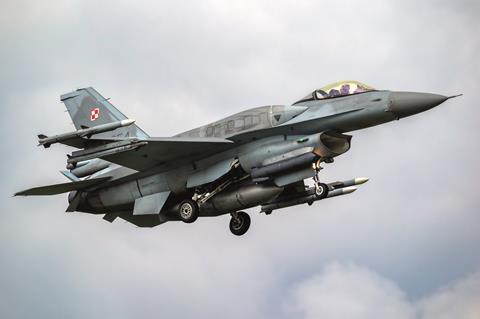
The F119, which powers the US Air Force’s F-22 Raptor, was a breakthrough becoming the first operational fifth generation fighter engine. It combined stealth technologies and vectored thrust with high thrust-to-weight performance to provide unprecedented manoeuvrability and survivability. The engine also enabled “supercruise” for pilots, giving the F-22 exceptional combat performance without compromising mission range. The engine quickly became the forefather for the advanced F135, which powers the fifth generation F-35 Lightning II.
“With the F135 and F119, Pratt & Whitney is the only producer of operational fifth-generation engines, which have nearly two million combat-proven flight hours,” adds Albertelli. “By offering range, power, thermal management, survivability and stealth qualities, we bring a combination of lethality to the market that is more than just the ability to power a jet from point A to point B. The women and men who protect our freedom rely on aircraft powered by Pratt & Whitney.”
Storied history and impressive present aside, a key task for Albertelli is to equip the military business for a future beyond fifth-generation manned fighters and other current airborne assets. “As we build on the legacy of the people who came before, we’re focused on developing the tools, processes and technologies needed to shape the future of global aerospace propulsion and meet the evolving needs of our customers. That comes with investment in technology and talent to ensure we continue doing what we have done well for the next 100 years and beyond,” she says.
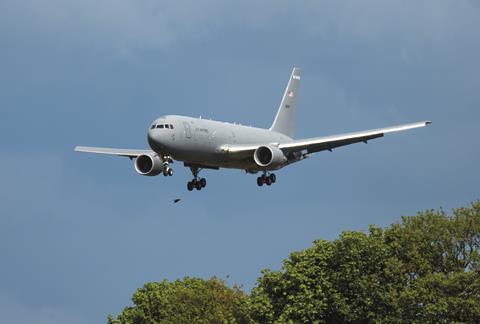
One of the most immediate objectives for Albertelli is the F135 Engine Core Upgrade (ECU). The F-35 has been the most successful military programme since the Cold War, with 20 customers and orders expected to exceed 3,500. In under two decades, the F135 has flown one million hours, demonstrating the critical role it plays in modern air combat and its exceptional operational readiness and sustainment network.
An upgrade is due, and Pratt & Whitney intends to have the ECU available for retrofit and on new-builds for all three F-35 variants in the coming years. In September 2024, Pratt & Whitney was awarded a contract valued up to $1.3 billion to continue work on the F135 ECU. “This contract is critical to continuing our positive forward momentum on this program,” says Albertelli. “It allows us to continue work in the risk reduction phase with a fully staffed team focused on design maturation, aircraft integration, and mobilizing the supply base to prepare for production.”
Technologies from the F135 ECU – intended to power new, even more advanced capabilities – may also be adapted for other production engines. “With one million flight hours on the F135, think of all the data and information we have collected,” she says. “We can take those learnings and spiral these back into the current engines. For instance, the F100 today is not the same as the one your grandfather flew. It is the only fourth generation engine that offers operationally proven fifth generation technologies, such as thermal coatings, improved turbine cooling capabilities and prognostics.”
Emerging technologies
In terms of what comes next, Pratt & Whitney is actively supporting next generation technologies. Teaming with Northrop Grumman, it is the power provider on the sixth-generation B-21 Raider stealth bomber programme for the US Air Force. A test version of the low-observable aircraft – which is intended to replace the B-1 Lancer and B-2 Spirit during the 2040s – conducted its first flight in November 2023.
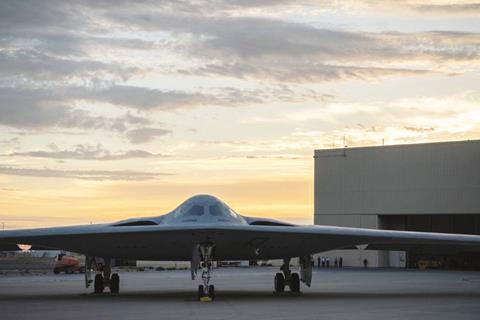
Pratt & Whitney is also in the process of procuring and assembling its offering for the US Air Force’s Next Generation Adaptive Propulsion programme. This engine, dubbed the XA103, passed a critical design review in early 2025, clearing the way for Pratt & Whitney to move onto the next stage by transitioning comprehensive digital models into a physical prototype for testing.
With ground tests scheduled in the late 2020s, the engine’s adaptive architecture will enable its components to actively adjust for optimized fuel efficiency, survivability, and power and thermal management. This step change in technology will enable the required range, weapon and sensor capability, and the persistence that future air dominance platforms will require to meet challenging operational needs.
The digital revolution, which Pratt & Whitney has pioneered, is crucial to how the business partners with the customer throughout the design process. “We are able to do everything now in a collaborative digital environment, in real time,” says Albertelli. “It really sets the stage for how we will deliver these advanced adaptive engines, and other engines in the future.”
While Pratt & Whitney is innovating and helping to define the future of large fighter engines, it is also leveraging its portfolio of advanced smaller engines to bring key capabilities to Collaborative Combat Aircraft (CCA) pursuits. When it comes to CCA, the top priorities are speed, cost and capability. Pratt & Whitney has several highly mature commercial-off-the-shelf engines – or close derivatives – in production today that meet aggressive thrust and fuel burn targets. The engines have robust support networks and can scale to meet growing demand.
“We’ve always offered a wide range of propulsion solutions, but CCA is a different requirement,” says Albertelli. “Customers need the product fast and in high volume, and there is a different mindset about affordability. To support those requirements, we are looking to use commercial off-the-shelf engines or even existing engines we scale up a bit. There is also a lot more that we can do with additive manufacturing, and we are working to simplify the design to make it as easy as possible to produce. For instance, our engineers reduced the total part count on our TJ150 from over 50 to just a handful.”
Pratt & Whitney has over three decades of experience with additive manufacturing. Over the years, the team has used additively manufactured parts to support various development needs, including rig hardware, ground test and flying test bed applications. Pratt & Whitney GATORWORKS, the company’s rapid development arm, has been the driving force behind the TJ150 additive redesign. The TJ150 is a compact, high-performance turbojet engine that can be manufactured quickly and has proven reliability. With 150lb of thrust, it is designed to power a variety of autonomous systems and weapons for global customers.
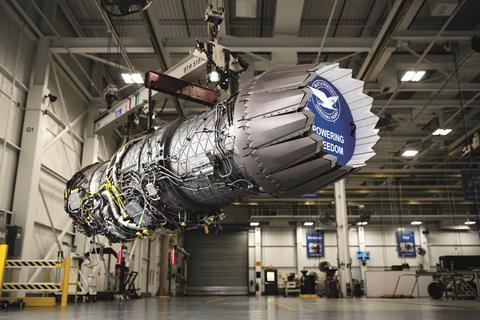
RDE focus
Another potentially disruptive technology that Pratt & Whitney is focusing on is rotating detonation engines, or RDE, with the company’s research arm – RTX Technology Research Center – recently carrying out a series of tests that validated key elements of their design approach. The advantage of RDEs is that they have no moving parts. What rotates is a detonation wave that generates thrust. The result is high thermal efficiency and performance, which allows for a small, compact and cost-effective engine. The business is now working with the US Department of Defense to accelerate a path to an integrated engine and vehicle ground test in the coming years.
Albertelli, who has held several leadership roles at Pratt & Whitney during a 30-year career in the industry, is encouraged by progress. “Because an RDE is compact and very simply designed, it has the potential to be a very cost-effective engine that could be utilized on a weapons system, leaving room for additional payload and other capabilities,” she says. “As the RDE concept translates to reality, it is really quite fitting that we are able to share the milestone with the RTX Technology Research Center, which has supported so many of our era-defining technologies.”

Pratt & Whitney’s investment stretches beyond technical capabilities to global sustainment. To support its more than 7,500 engines in service, a comprehensive maintenance, repair and overhaul network is crucial. Pratt & Whitney has been investing heavily in a global sustainment network of depots, upgrade facilities, and field service engineers for military engines offerings. In October last year, it opened its 79,000sq m (845,000sq ft) facility in Oklahoma City, doubling the size of its existing site, to create a sustainment hub for the F135 and all its in-service engines, including the F117, F119, TF33 and F100.
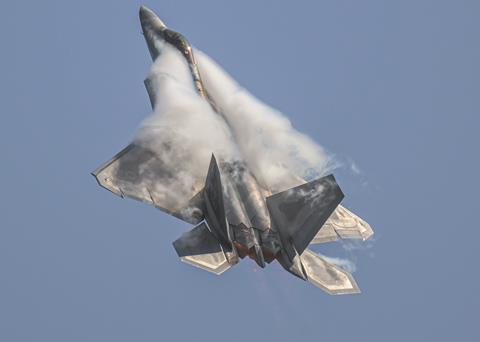
In February of 2025, the US Air Force awarded Pratt & Whitney a three-year contract extension to service its fleet of more than 400 F119 engines for the F-22, which Albertelli describes as a “very maintainable engine”, despite its considerable engineering complexity.
When discussing the next 100 years for Pratt & Whitney and her goals for the next decade, Albertelli describes her job as “the best in aviation – I get to work with all the great innovation and technology of today, but I’m also helping set the stage for the future.” She insists that she and her team can never bask in past glories.

“We didn’t get to be 100 years old by doing the same thing,” she says. “For as long as we have been making dependable engines with safety always at the forefront, we have had to earn our customers’ trust every day. We will continue to invest in the talent, capacity and technologies that will set us up for the next century to help our customers maintain air superiority.”
Pratt & Whitney at 100

To mark the centenary of Pratt & Whitney, FlightGlobal has partnered with RTX to produce a souvenir special looking at the legacy and future of one of the industry’s most powerful and influential brands.
- 1
- 2
- 3
- 4
- 5
- 6
 Currently
reading
Currently
reading
Pratt & Whitney at 100: Military Engines – powering freedom
- 8
- 9
- 10
- 11
- 12
- 13




